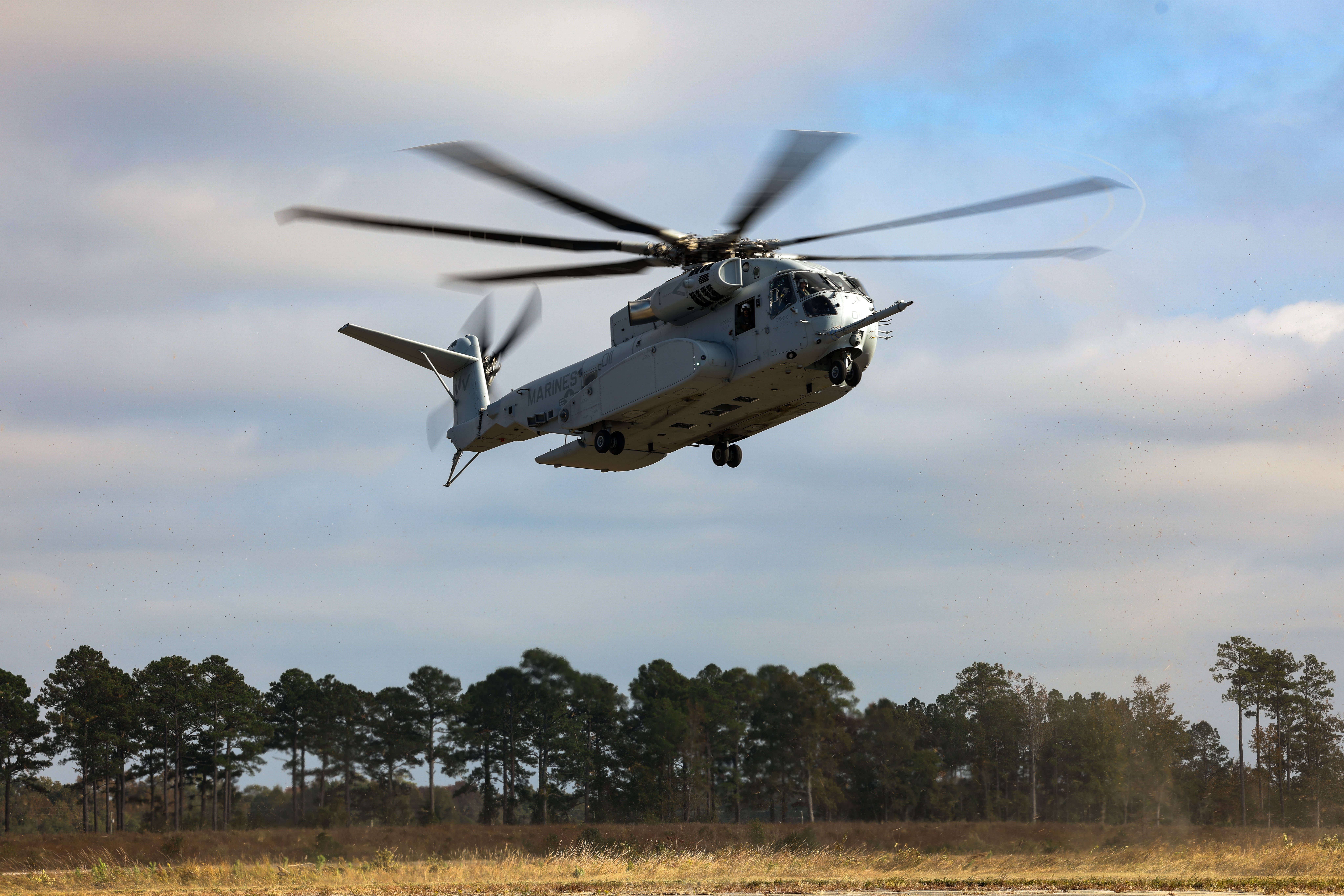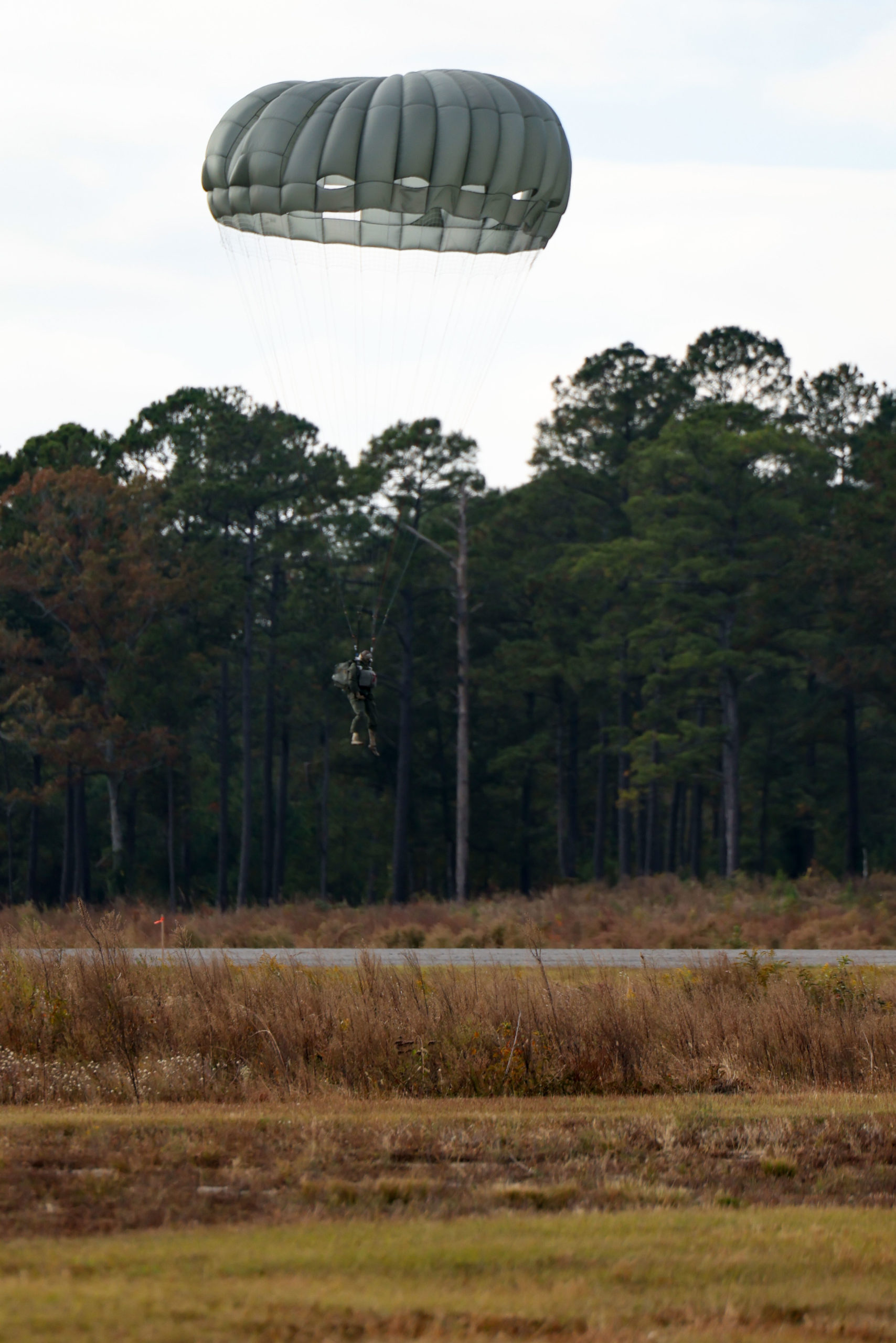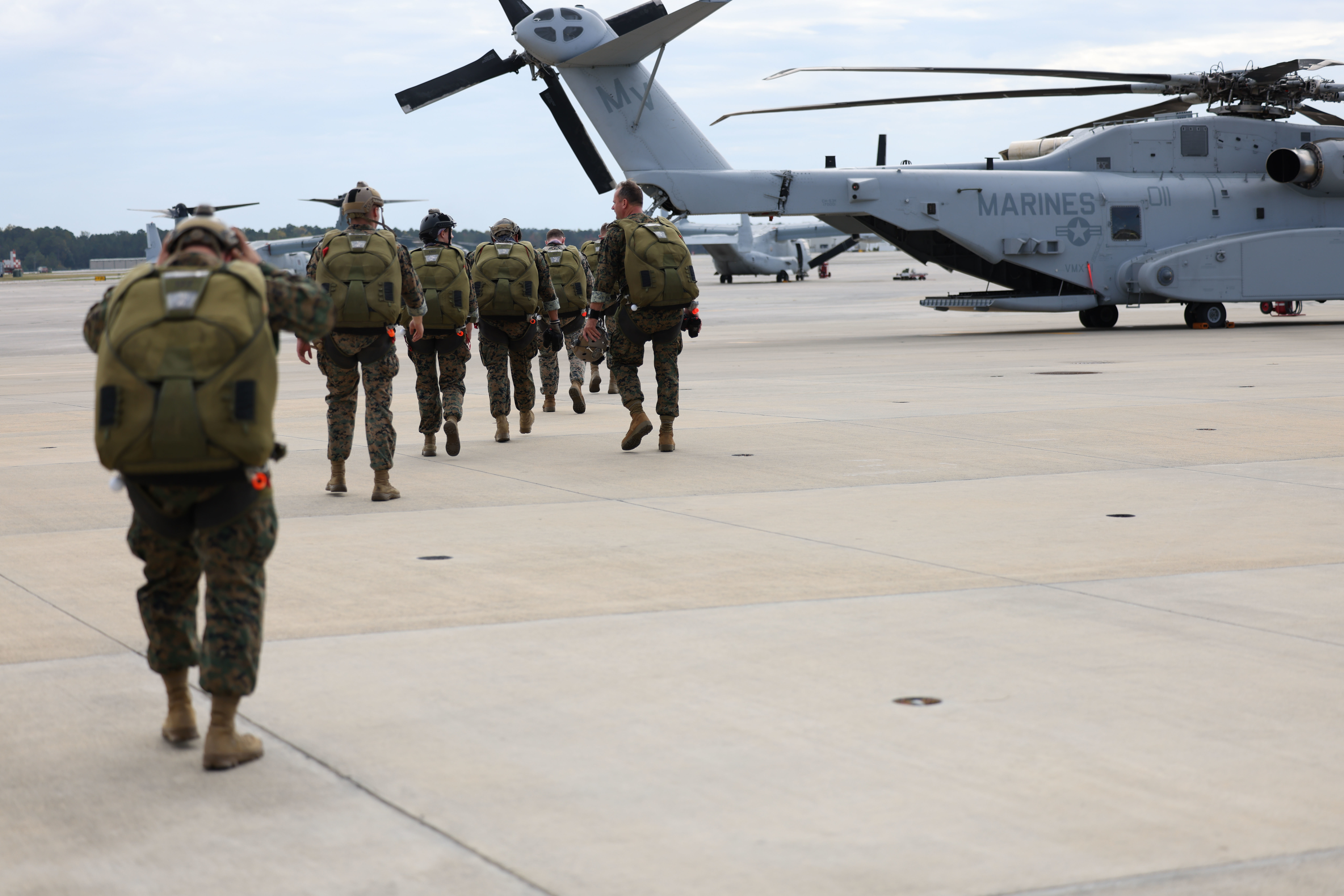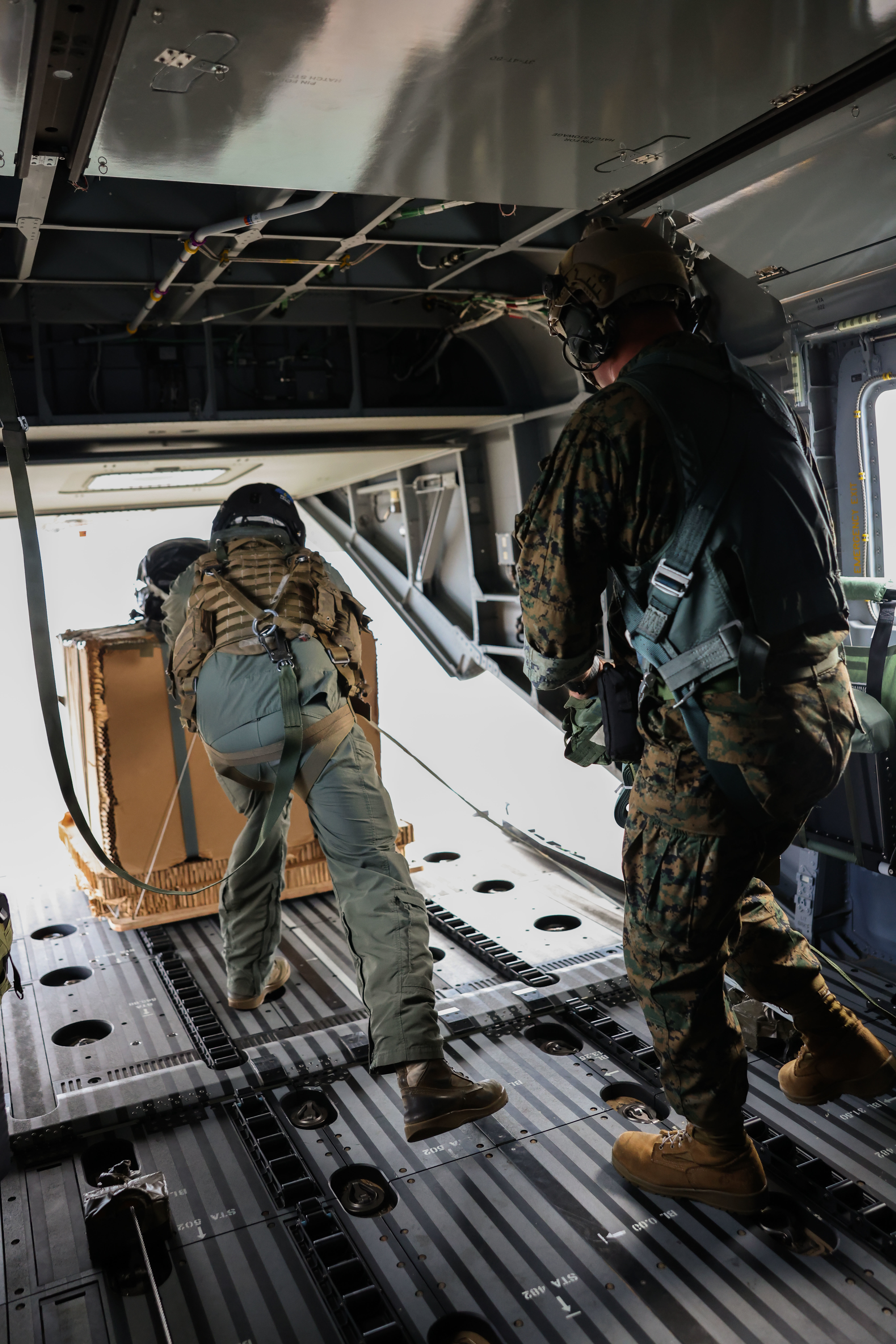By Sgt. Jesula Jeanlouis
CAMP LEJEUNE, N.C. – Marine Forces Special Operations Command’s Paraloft personnel teamed up with 2nd Marine Logistics Group’s Air Delivery Platoon to evaluate the secondary mission capabilities of the CH-53K King Stallion helicopter, Oct. 25 – Nov. 3, 2022. This evaluation included day and night aerial cargo delivery, low-level static line parachute operations, and military freefall operations.
“The validation of these operations and the data collected will provide added capability to the fleet in support of the initial [Marine Expeditionary Unit] deployment and lay the groundwork for future operational employment of the CH-53K,” explained Lt. Col. Adam D. Shirley, Marine Raider Regiment Air/Fires Officer and CH-53K pilot. “This event was significant because it was the first time that any of these tasks have been conducted from this new, immensely capable aircraft.”
Headquarters Marine Corps chose MARSOC to assist in the evaluation of the new helicopter due to the command’s unique insertion and extraction proficiency. 2nd MLG provide subject matter expertise to augment MARSOC’s Paraloft personnel during the aerial delivery operations.
“The CH-53K will surely play a crucial role in supporting not only MARSOC and the Marine Corps, but our joint, combined, and coalition partners worldwide,” said Shirley.
The CH-53K King Stallion helicopter is the Marine Corps’ newest, and most advanced assault support, heavy-lift helicopter replacing the CH-53E Super Stallion. The primary mission of the CH-53K is the ship-to-shore transport of heavy equipment and supplies in support of amphibious operations and subsequent actions ashore.
“A requirement for the Air Test and Evaluation Squadron Two One is to validate an aircraft’s ability to execute those mission essential tasks, as outlined in the Training and Readiness Manual,” explained Shirley.
MRR’s Paraloft personnel evaluated all tasks in accordance with Air Test and Evaluation Squadron Two One’s test plan and evaluation criteria using a crawl-walk-run approach. Flight Test Engineers and program representatives observed and recorded data while MARSOC subject matter experts validated aircraft rigging procedures for static line parachuting and aerial cargo delivery.
“The first phase began with packing parachutes, jumper and Jump Master refresher training, [drop zone] preparation, and safety briefs,” continued Shirley. “The next phase included experimentation with the aerial delivery via parachute of 200-pound door bundles and 500-pound cargo drops from the ramp of the aircraft. The final phase consisted of personnel parachute operations that included military free fall jumps from 10,000 feet.”
The tests are designed to validate the aircraft’s ability to execute tasks that not associated with the aircraft’s primary mission of assault support transport. Secondary missions include helicopter insertion and extraction operations, medical transport, and casualty evacuation.
“Once secondary mission tasks are validated, the CH-53K will be authorized to conduct all tasks required in the Training and Readiness Manual that received a favorable evaluation,” said Shirley. “If any task does not receive a favorable evaluation, it will be referred to engineering for a solution and be re-evaluated at a later date.”
This article was first published on 25 November 2022 and is credited to the Marine Forces, Special Operations Command.
To see a further discussion of MARSOC please see Chapter Seven of our recently published book on USMC transformation.







